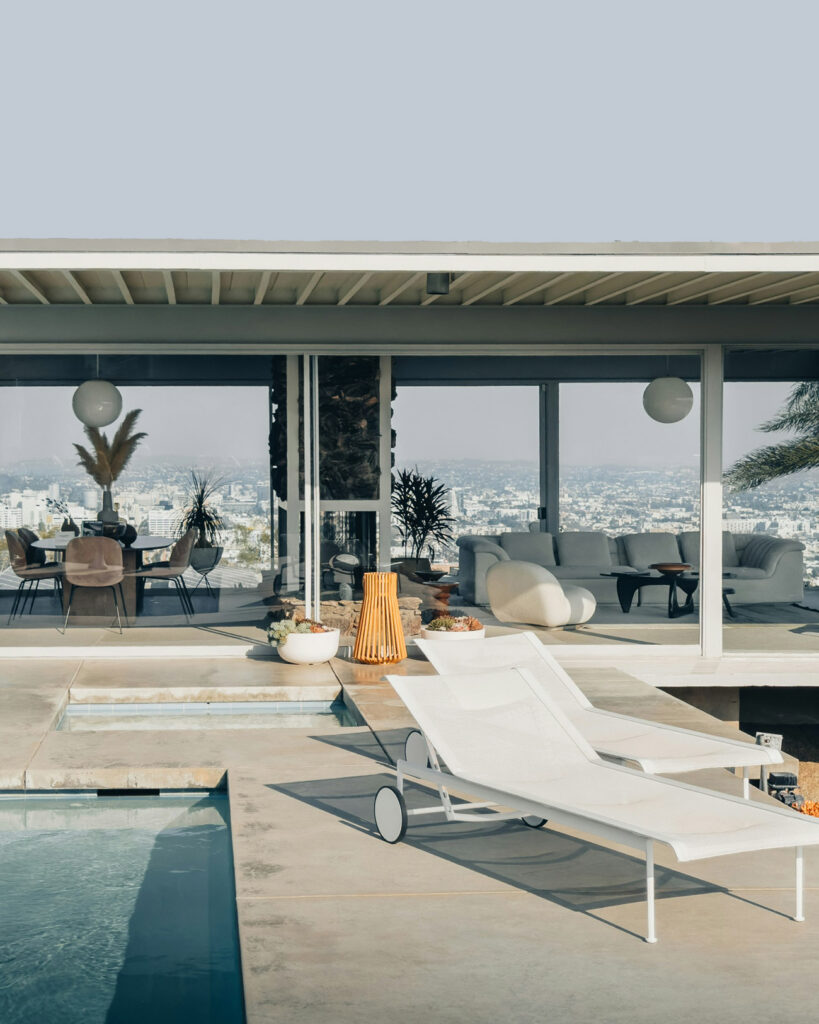The Stahl House, also known as Case Study House No. 22, is a prominent example of 20th-century modern architecture designed by American architect Pierre Koenig. The client, C. H. “Buck” Stahl, a former American football player, purchased the property above Sunset Boulevard in 1954. Even before his collaboration with Koenig, Stahl had visions for a modern house made of glass and steel, which would offer a breathtaking panoramic view of Los Angeles. He and his wife Carlotta initially worked independently on the preparation of the property.
In November 1957, the Stahl’s finally hired architect Pierre Koenig. In May 1959, Koenig began construction of the house. The project was part of the renowned Case Study House program, which was initiated by the magazine “Arts & Architecture” to integrate modernist principles into residential architecture and promote new ways of life. Construction was completed in June 1960.
The Stahl House consists of an L-shaped structure built on a hillside that was previously considered unsuitable for development. The southern wing of the house is completely made of glass, offering a beautiful view of the city from all rooms. This extensive usage of glass was revolutionary in the 1950s, but is now a common feature of minimalist architecture.


Initially, simple glass was used, but this was later replaced by shatterproof glass. Another significant feature of the house is the balcony that runs around the living room without a railing. The house covers approximately 200 square meters and has two bedrooms. The public and private areas of the house are clearly separated and connected only by a hallway that leads to a central swimming pool.
The Stahl House became famous through the iconic photographs of the famous architectural photographer Julius Shulman. His photographs contributed significantly to the worldwide fame of the house and made it a symbol of modern architecture in California.
Today, the Stahl House is still owned by the Stahl family and is a frequently used location for film and photo shoots. It is a lasting testament to the vision of Buck and Carlotta Stahl and the masterful realization of that vision by Pierre Koenig.

